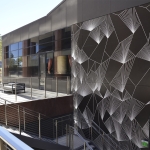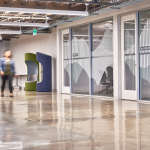Wayfinding is an integral part of your branding. When integrating wayfinding into interior design, it’s important to consider the existing design elements within your space and how you can use them to create an effective wayfinding system.
-
Wayfinding signage should be easy to see and understand
Wayfinding signage should be designed so that it flows with the existing architecture, materials, and color palette of the space. Additionally, designers should use consistent visual cues such as symbols or icons that are easily recognizable and understood by visitors.
-
Use a consistent design style for all wayfinding elements
Environmental factors need to be taken into account when designing a wayfinding system. Lighting levels, obstacles or noise levels may impact navigation within a space and should be considered when creating directional signs or other visual aids.
-
Make sure your wayfinding signage is up-to-date and in line with your branding
Wayfinding solutions should be dynamic enough so that they can accommodate changes in foot traffic due to events or new construction projects while still being able to provide visitors with clear directions at all times. Additionally, designers should have an understanding of how foot traffic patterns change over time so they can adjust signage accordingly in order to maintain accurate directional guidance at all times.
-
Use directional arrows to help visitors navigate your space
Directional arrows improve your wayfinding strategy as they serve as a guide for new visitors. It enhances the experience of clients and new employees when they first visit your premises. It not only helps them to navigate through your space but also saves the time they would otherwise spend by asking others about directions.
-
Make your signage stand out
Wayfinding can also be used to highlight key features or points of interest within a space. For example, directional signs could be used to draw attention towards areas like exhibitions, cafes or restaurants. Using contrasting colors for creating signage can help these signs stand out and ensure optimal visibility.
Final Words
Wayfinding can also help create cohesive branding elements throughout a physical space, which strengthens the visitor’s connection with the brand. Finally, designers should think about how they want their wayfinding system to interact with their overall interior design goals and objectives. Wayfinding systems can be used not just for functional purposes but also for aesthetic ones; signs and other visual cues could be used as part of a larger design scheme in order to create unified experiences for visitors that have emotional connections with brands and businesses. By taking these factors into account during the design process, businesses can effectively integrate wayfinding into their interior design without compromising on either functionality or aesthetics.




